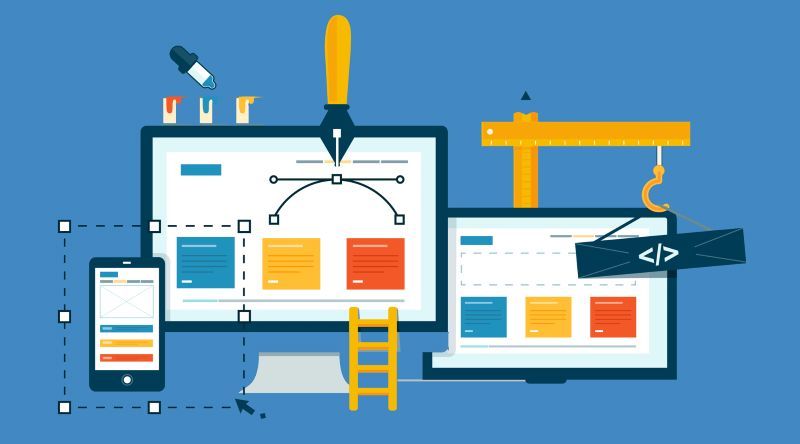

Let's learn more about this topic with Iron Snout below with our comprehensive guide on how to create a free website without any programming knowledge. Building your own website has never been easier!
In today's digital age, having a website is essential for businesses, personal brands, and even hobbyists. The good news is that you don't need to be a coding expert or have a big budget to create a professional-looking website. With the right tools and guidance, anyone can build a stunning website for free without writing a single line of code. This article will walk you through the process step by step, ensuring you have all the information you need to get your website up and running in no time.
The first step in creating your free website is selecting the right platform. There are numerous website builders available that offer free plans, each with its own set of features and limitations. Some popular options include Wix, WordPress.com, and Google Sites. When choosing a platform, consider factors such as ease of use, customization options, and the ability to upgrade to a paid plan in the future if needed.
Wix is known for its user-friendly drag-and-drop interface, making it ideal for beginners. It offers a wide range of templates and design elements, allowing you to create a unique website without any coding knowledge. WordPress.com, on the other hand, provides more flexibility and scalability, making it a good choice for those who may want to expand their website in the future.
Google Sites is another excellent option, especially if you're already familiar with Google's suite of tools. It's straightforward to use and integrates seamlessly with other Google services like Drive and Calendar. Take some time to explore each platform and choose the one that best fits your needs and skill level.
Once you've chosen your platform, it's time to select a domain name. Your domain name is your website's address on the internet, so it's important to choose one that's memorable and relevant to your content. When using a free website builder, you'll typically be given a subdomain of the platform you're using (e.g., yoursite.wix.com).
While this is a good starting point, keep in mind that you may want to upgrade to a custom domain in the future for a more professional look. When brainstorming domain names, try to keep them short, easy to spell, and avoid using numbers or hyphens if possible. It's also a good idea to check if your desired domain name is available on social media platforms to maintain consistency across your online presence.
With your platform and domain name selected, it's time to start designing your website. Most free website builders offer a variety of templates to choose from, which can serve as a great starting point for your design. When selecting a template, consider the purpose of your website and choose one that aligns with your goals and content.
Once you've chosen a template, you can begin customizing it to fit your needs. This typically involves adding your own images, changing colors and fonts, and arranging elements on the page. Don't be afraid to experiment with different layouts and designs until you find one that feels right for your brand or personal style.
With your design in place, it's time to add content to your website. Start by creating your homepage, which should give visitors a clear idea of what your website is about and what they can expect to find. Include a compelling headline, a brief introduction, and clear navigation to help guide users through your site.
Next, create additional pages for different sections of your website. This might include an "About" page, a blog, a portfolio, or a contact page, depending on the purpose of your site. When writing content for your website, keep your target audience in mind and focus on providing value to your visitors.
Even with a free website, it's important to consider search engine optimization (SEO) to help your site rank well in search results. Start by using relevant keywords naturally throughout your content, including in page titles, headings, and meta descriptions. Make sure your website is easy to navigate and that all pages are linked properly.
Additionally, optimize your images by using descriptive file names and alt text. This not only helps with SEO but also improves accessibility for users with visual impairments. While free website builders may have some limitations when it comes to advanced SEO techniques, these basic practices can still help improve your site's visibility in search results.
While free website builders may have some limitations compared to paid options, many still offer a range of features and tools to enhance your website's functionality. Depending on your chosen platform, you may be able to add contact forms, social media integration, image galleries, and even basic e-commerce functionality.
Explore the available options within your chosen platform and consider which features would be most beneficial for your website. For example, if you're creating a portfolio site, you might want to focus on adding a gallery feature to showcase your work. If you're building a blog, look for options to add comments and social sharing buttons to encourage engagement with your content.
Keep in mind that while free plans often offer a good range of basic features, you may need to upgrade to a paid plan to access more advanced functionality. However, for many simple websites, the features available in free plans are often sufficient to create a professional and functional site.
Before making your website live, it's crucial to thoroughly test it to ensure everything is working as intended. Check that all links are functioning correctly, images are loading properly, and your content is displaying as expected across different devices and browsers. Many website builders offer preview modes that allow you to see how your site will look to visitors before publishing.
Pay special attention to how your website looks and functions on mobile devices, as a significant portion of web traffic now comes from smartphones and tablets. Most modern website builders offer responsive designs that automatically adjust to different screen sizes, but it's still important to verify that your content is easily readable and accessible on smaller screens.
Once you're satisfied with how your website looks and functions, it's time to launch! Publish your site and share it with friends, family, or colleagues to get initial feedback. Remember that launching your website is just the beginning – regularly updating your content and making improvements based on user feedback will help ensure your site remains relevant and engaging over time.
Creating a website is not a one-time task; it requires ongoing maintenance and updates to keep it fresh and relevant. Set aside time regularly to review your website's content, add new information, and make any necessary updates. This is particularly important if you're running a blog or showcasing time-sensitive information.
Many free website builders offer analytics tools that allow you to track visitor behavior on your site. Use this data to understand which pages are most popular, how long visitors are staying on your site, and where they're coming from. This information can help you make informed decisions about future content and improvements to your website.
Additionally, keep an eye on your chosen platform's updates and new features. Website builders often release new tools and design elements that can help improve your site's functionality and appearance. By staying informed about these updates, you can continue to enhance your website over time, even within the limitations of a free plan.
As your website grows and evolves, you may find that you need more features or functionality than what's available in your free plan. At this point, it's worth considering upgrading to a paid plan or even migrating to a more robust platform. Paid plans often offer benefits such as custom domains, removal of platform branding, and access to more advanced features and design options.
Before making the decision to upgrade, carefully evaluate your needs and the potential benefits of a paid plan. Consider factors such as your website's traffic, your long-term goals, and any specific features you need that aren't available in the free version. If you decide to upgrade, many platforms offer seamless transitions from free to paid plans, allowing you to preserve your existing content and design.
Creating a website for free without coding is an excellent way to establish your online presence quickly and easily. By choosing the right platform, designing thoughtfully, and regularly maintaining your site, you can create a professional and engaging website that serves your needs and attracts visitors. Remember that your website is a reflection of you or your brand, so take the time to make it the best it can be, even within the constraints of a free plan. With dedication and creativity, you can build a website that you're proud to share with the world.